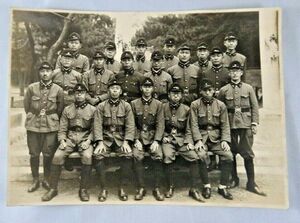Daxian occupation of Caldera
The occupation of Caldera by Qian Daxia during the second Great War started on 8 May 1936 after the surrender of all remaining Calderan forces by order of General Jon Weinworth, in the aftermath of the disastrous Battle of Bravador. Despite the official surrender, various armed formations, especially those linked to the Volkspartei, continued to resist the occupation and carry out hit and run attacks. Caldera was governed by a military authority until 1938 at which point the Daxians organized a native collaborationist government to oversee most civilian affairs; due to the deep seated resentment of Gothic domination this government was mainly staffed by Volins. In spite of this apparent concession to native Calderan rule, Daxian actions and historical records point to a plan to permanently control the island and colonize choice areas with ethnic Daxians. To this end occupation authorities built several towns and road infrastructure close to important mineral deposits in order to exploit them for the wider war effort. By 1940 some two thousand families had been moved into these new towns, although most would flee the island with the end of the occupation. Losses incurred in other fronts around Audonia, the continued and intensifying resistance of Caldera's population and the complex logistics of supplying a force in a far off island all contributed to the withdrawal of Daxian forces from the island in the spring of 1943. Several hundred Daxian settlers refused to leave with the army and, pillaging some of their equipment as it retreated, some managed to hold out in isolation against Calderan forces until 1958.

The occupation by Daxia is remembered in modern Calderan history as a time of deprivation and hardships brought on by the cruelty of Daxian forces. In Daxia the defeat and occupation of Caldera gave General Xiu Guangho an edge against his rival Dai Hanjian as the leading military man in government but the retreat in 1943 completely discredited him and led to his sidelining and assasination. Relations between the two nations continue to be strained in modern times as Daxia has refused to either offer any reparations or issue any apologies on the subject; an especially thorny issue being that of the Daxian-run POW death camps, which Daxian authorities deny ever existed.
History
Occupation
Military rule
1936-1938
The aftermath of the surrender of Calderan forces gave way to a two year period of direct military rule during which the occupation forces extended their writ to most of the island though holdouts remained in parts of Bavogia province in the north. General Xiu Guangho served as the island's governor for a period of two years before parlaying his military achievements into a more prestigious command in mainland Audonia. During his tenure Guangho instituted an iron fisted regime, one of his first actions was the issuing of an order to deport the families of all captive Calderan soldiers to prison camps in Xisheng where they were held as hostages to ensure the good behavior of the prisoners; the fact that the Daxian navy did not have complete control of the sea lanes in the Nysdra Sea meant many of the unarmed transports carrying the families were targeted and sunk by Urcean forces unaware of what the vessels carried. Guangho resisted attempts by civilian ministries to restart the Calderan economy beyong the barest of subsistence levels, arguing that native Calderans should be transformed into a mass of subsistence farmers and unskilled labor. To this end Guangho closed all newspapers, research centers, schools and other institutions of higher learning. In 1937 he ordered the phasing out of the local currency, the Calderan Piece, and its replacement with the New Calderan Peso issued by the Daxian military itself; the new currency can be understood as very similar in purpose to scrip or IOU credit notes.
The governor's continued tinkering with the island's economy and his recalcitrance to carry out needed reforms led to his 'honorable transfer' to the Tapakdore front, a hot sector at the time. Despite not being at the helm of the Calderan ocuppation by the time of the withdrawal in 1943, Guangho was heavily blamed for the failures by both the public and his military colleagues at the Imperial Headquarters. Rightly or wrongly he was seen by the Emperor as responsible for the hardening of attitudes against Daxian rule through his economic mismanagement and draconian behavior. Guangho's governorship was followed by the appointment of a civilian administrator with oversight of all occupation forces.
Formation of the Calderan Friendship government
1938-1943